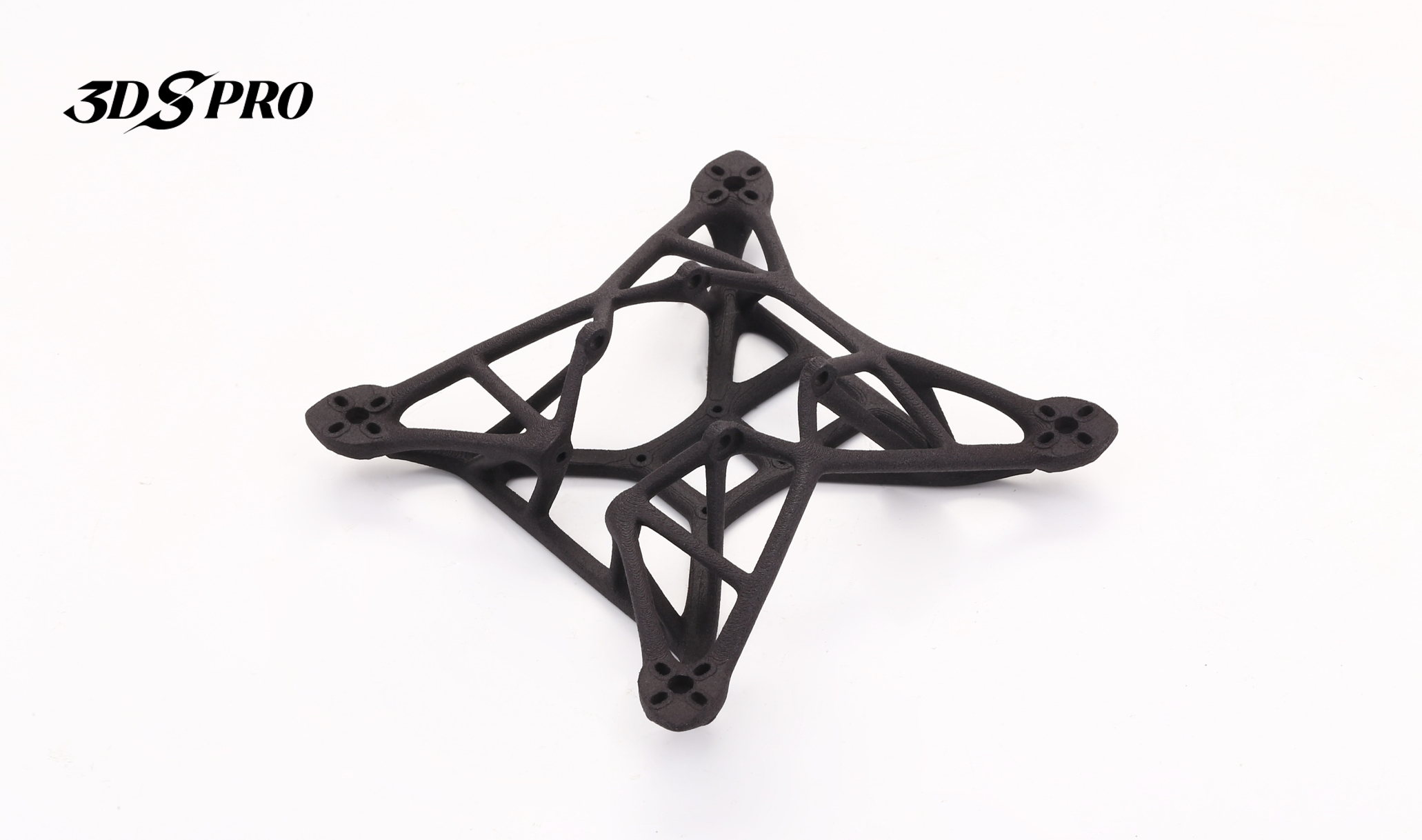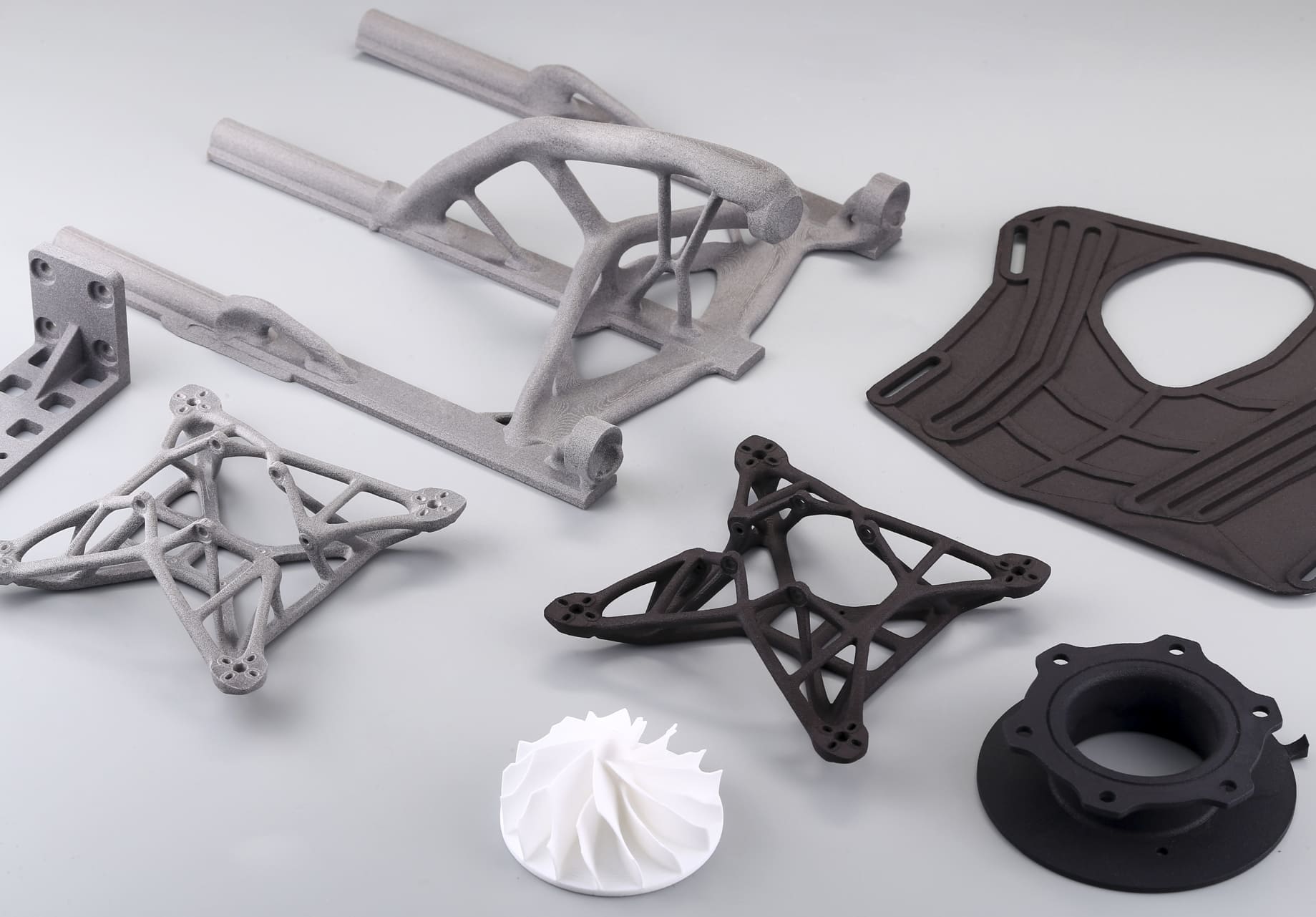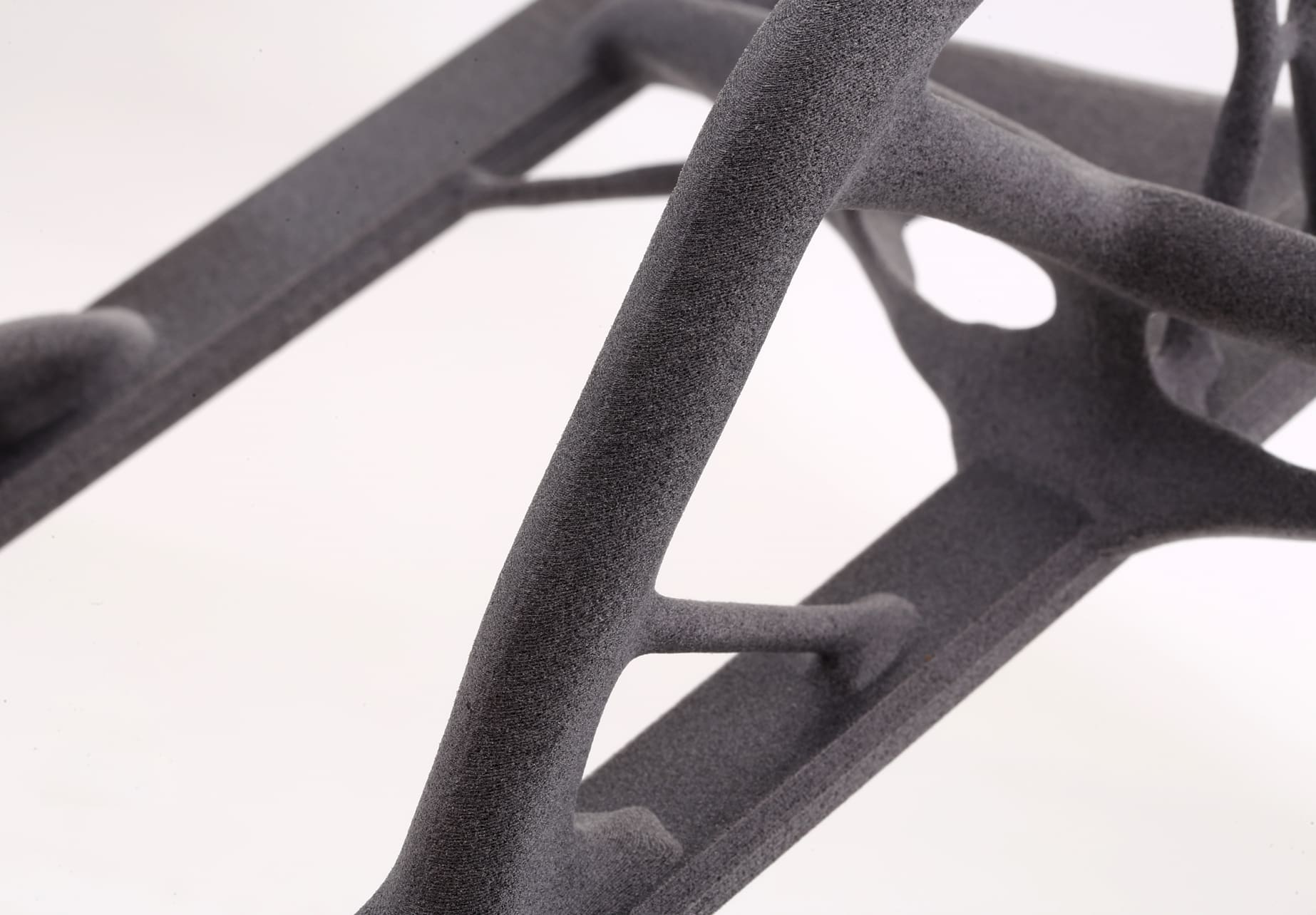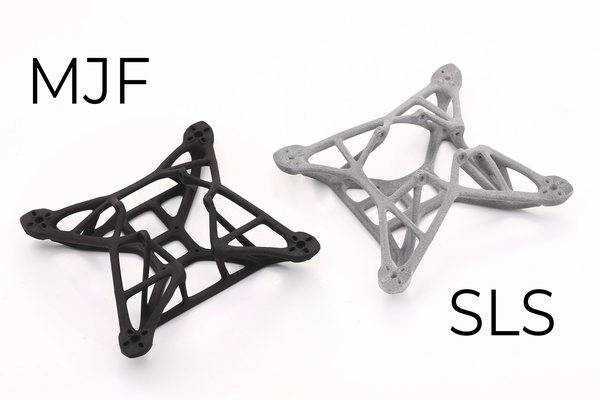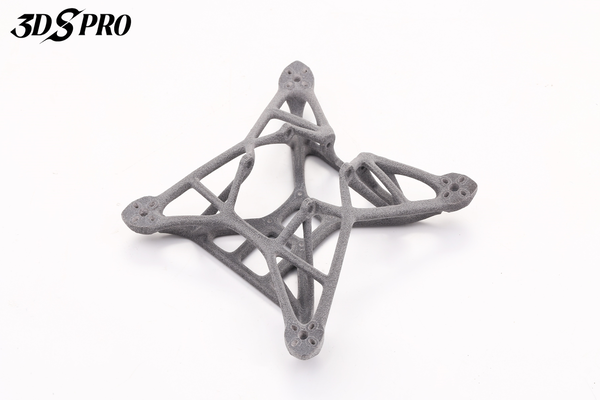What is Multi Jet Fusion?
Multi Jet Fusion (MJF) is an advanced 3D printing technology innovated by HP Inc. MJF 3D printing produces parts with high precision, excellent mechanical properties, and relatively fast production times.
Unlike traditional 3D printing methods that use lasers or extrusion processes, MJF operates by depositing a fine layer of powder material onto the printing bed. Then, using a thermal inkjet array, it selectively applies fusing and detailing agents across the powder bed. The process involves a combination of inkjet printing and infrared heat to fuse the powder particles.
The detailing agent is crucial as it defines the edges of each layer, ensuring crisp and smooth surfaces. The fusing agent solidifies the powder where the part needs to be built. After each layer is fused, a fresh layer of powder is distributed on top, and this sequence continues until the object is completely formed.
The printing speed of MJF is one of its significant advantages. The inkjet array covers the entire print bed at once, making the process faster than selective laser sintering (SLS), which has to trace each layer point by point. Moreover, MJF can produce parts with complex geometries without the need for support structures, which reduces waste and post-processing time.
MJF technology is particularly suitable for producing functional prototypes, end-use parts, and small to medium-sized production runs. It supports a range of materials, primarily thermoplastics like Nylon PA12, which is known for its durability and fine-detail capabilities.
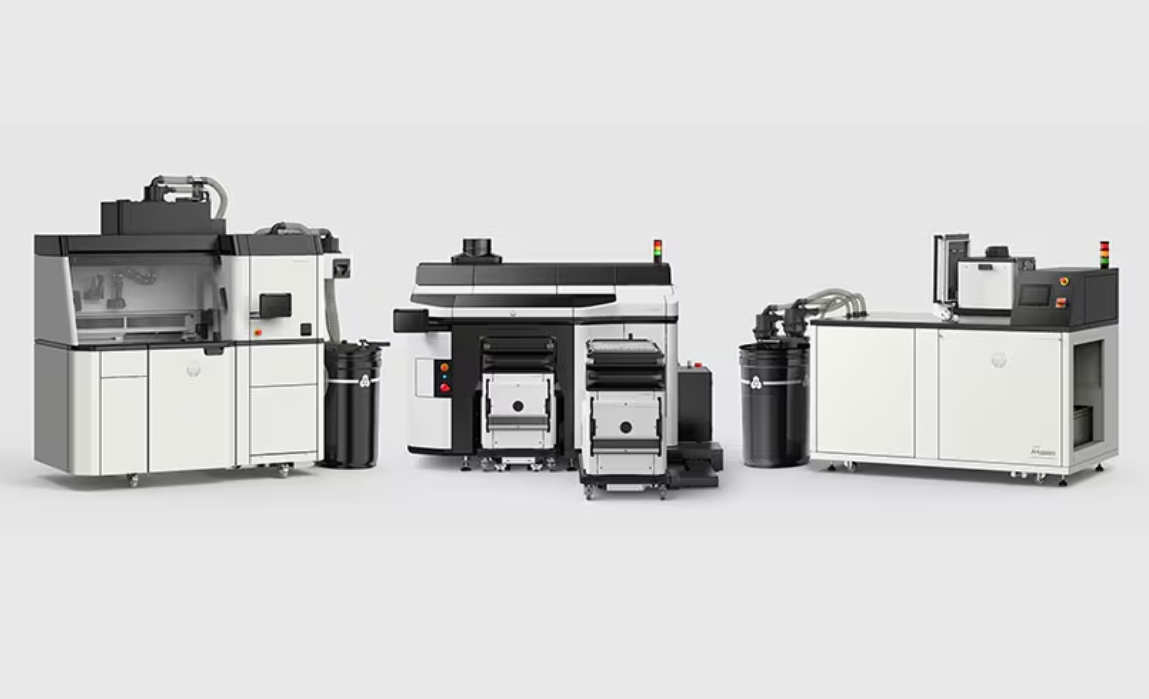
Image Source: HP
MJF 3D Printing Process
HP MJF 3D Printing Process Official Video
MJF printing process is blending precision, speed, and versatility to create objects layer by layer from powdered material. Let's break it down into steps to see how it works:
1. Preparation: The process begins with preparing the build chamber, where the temperature is meticulously controlled to ensure optimal printing conditions.
2. Powder Distribution: A thin layer of fine-grained thermoplastic powder is evenly spread across the build platform.
3. Printing: A carriage equipped with an array of thermal inkjet nozzles traverses the build platform, selectively depositing a fusing agent onto the powder bed. This agent delineates the object's cross-sectional area for that particular layer.
4. Fusing: Infrared energy is then applied, causing the areas with the fusing agent to melt and bond, forming a solid layer.
5. Detailing: Simultaneously, a detailing agent is applied around the perimeters of the object's cross-section. This agent prevents the edges from fusing, ensuring high-definition details and smooth surface finishes.
6. Layering: Once a layer is complete, the build platform lowers slightly, and a new layer of powder is distributed on top. The printing, fusing, and detailing process repeats, building the object layer by layer.
7. Cooling: After the print job is finished, the build chamber is left to cool, allowing the newly formed parts to solidify completely.
8. Extraction and Cleaning: The finished parts are then extracted from the build chamber. Excess powder is removed, often through a combination of brushing and air blasting.
MJF Materials
MJF primarily utilizes thermoplastic polymers, which are known for their durability and ability to be recycled.
Nylon PA 12
Nylon PA 12 is the most widely used material in MJF due to its excellent mechanical properties and balanced profile. It provides robust, high-density parts that are strong and have good chemical resistance to oils, greases, aliphatic hydrocarbons, and alkalies.

Nylon PA 12 Glass Beads
Nylon PA 12 can be blended with glass beads for applications requiring enhanced dimensional stability and stiffness. This composite material is ideal for complex assemblies and housings that must withstand high mechanical loads.
Nylon PA 11
Sourced from renewable castor oil, PA 11 is favored for its environmental sustainability. It offers similar benefits to PA 12 but with increased ductility and impact resistance, making it suitable for parts that require flexibility.
Polypropylene (PP)
Known for its lightweight and chemically resistant properties, PP is used in MJF for parts that need to endure chemical exposure and dynamic loads. It’s also a cost-effective option for both prototyping and end-use applications.
Thermoplastic Polyurethane (TPU)
TPUs are flexible plastics that can create parts with varying degrees of softness and elasticity. They are often used for producing complex geometries that require rubber-like properties.
These materials enable MJF to produce parts that can be used across various industries, from automotive to consumer goods, offering a combination of strength, precision, and aesthetic quality. Material selection depends on the specific needs of the application, including factors such as mechanical strength, flexibility, heat resistance, and color.
MJF 3D Printing Post-processing
After the intricate process of 3D printing with Multi Jet Fusion (MJF), the parts require various post-processing steps to reach their final form and function. These steps enhance the parts’ aesthetic appeal, mechanical properties, and suitability for their intended applications:
De-powdering
The first step is to remove any loose powder that remains attached to the parts after printing. De-powering is typically done using a combination of brushing and air blasting.
Bead Blasting
Bead blasting is used to achieve a uniform finish and remove any remaining powder. The process involves blasting the parts with tiny glass beads at high pressure.
Media Tumbling
For a smoother surface, parts can undergo media tumbling, where they are placed in a vibrating container filled with small ceramic chips. The vibration polishes the parts, reducing surface roughness.
Dyeing
MJF parts are naturally porous, making them ideal for dyeing. They can be immersed in a hot color bath. However, the dye penetrates only to a certain depth so that the color may fade over time with wear and tear.
Chemical Vapor Smoothing
This method enhances the surface finish by sealing it, making it easier to dye and certify for contact with skin and food. It smooths out the part without affecting its dimensional accuracy.
Coating
Parts can be coated with various materials to improve performance. Coatings can add properties like UV resistance, water repellency, or enhanced strength.
Infiltration
For parts that require additional strength or different properties, infiltration with another material, such as epoxy, can be performed. Infiltration also helps to seal the part against moisture and other environmental factors.
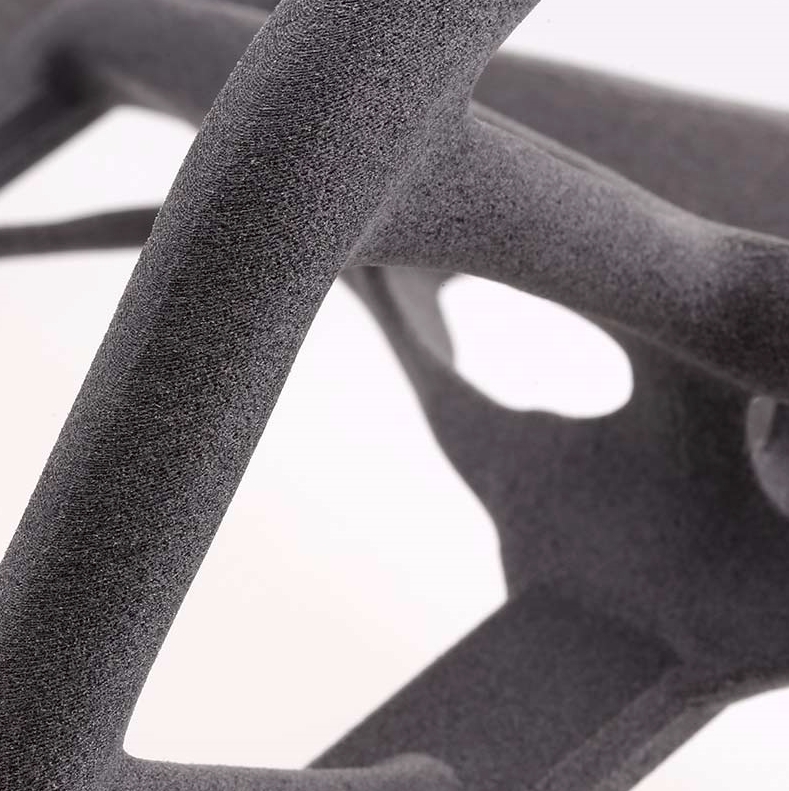
MJF Applications
1. Aerospace: In the aerospace sector, MJF is used to create lightweight components that can withstand the high demands of aerospace applications, including parts like ductwork, connectors, and non-cosmetic housings.
2. Automotive: MJF benefits the automotive industry by rapidly producing complex parts such as brackets, covers, and wiring clips. It's particularly useful for a limited-run, pre-production, and spare parts.
3. Medical: MJF is ideal for medical applications due to its precision and the ability to use biocompatible materials. It's used for producing custom prosthetics, orthopedic implants, and dental models.
4. Consumer Products: For consumer goods, MJF can create everything from wearable technology to household items, offering a high degree of customization and complex design capabilities.
5. Electronics: MJF is capable of producing watertight enclosures for electronics, ensuring protection and durability for devices exposed to various environmental conditions.
6. Manufacturing: MJF is used for both prototyping and end-use parts in manufacturing. It is particularly beneficial for producing high-complexity parts in small batches that would be expensive or impossible to produce using traditional manufacturing methods.
7. Robotics and Automation: MJF parts' strength and precision benefit components for geared systems, actuators, and robotic assemblies, which can include a high degree of articulation and interlocking features.
MJF 3D Printing Services
3DSRPO provides high-quality, precise, and reliable 3D printing solutions. With a deep understanding of MJF technology, 3DSRPO offers comprehensive services from initial design consultation to final production.
A range of MJF materials is available, offering different properties to match the specific needs of your project. Whether you need a single prototype or a small production run, MJF 3D printing services at 3DSPRO are tailored to your requirements, ensuring that each part meets your exact specifications.
At 3DSPRO, post-processing services such as dyeing, polishing, and surface smoothing enhance the appearance and performance of the printed parts. We can also turn around projects quickly, often within a few days, without compromising on quality.
By choosing 3DSRPO, you’re not just getting parts printed. You’re gaining a partner who can support you throughout the lifecycle of your product, from prototyping to production.
